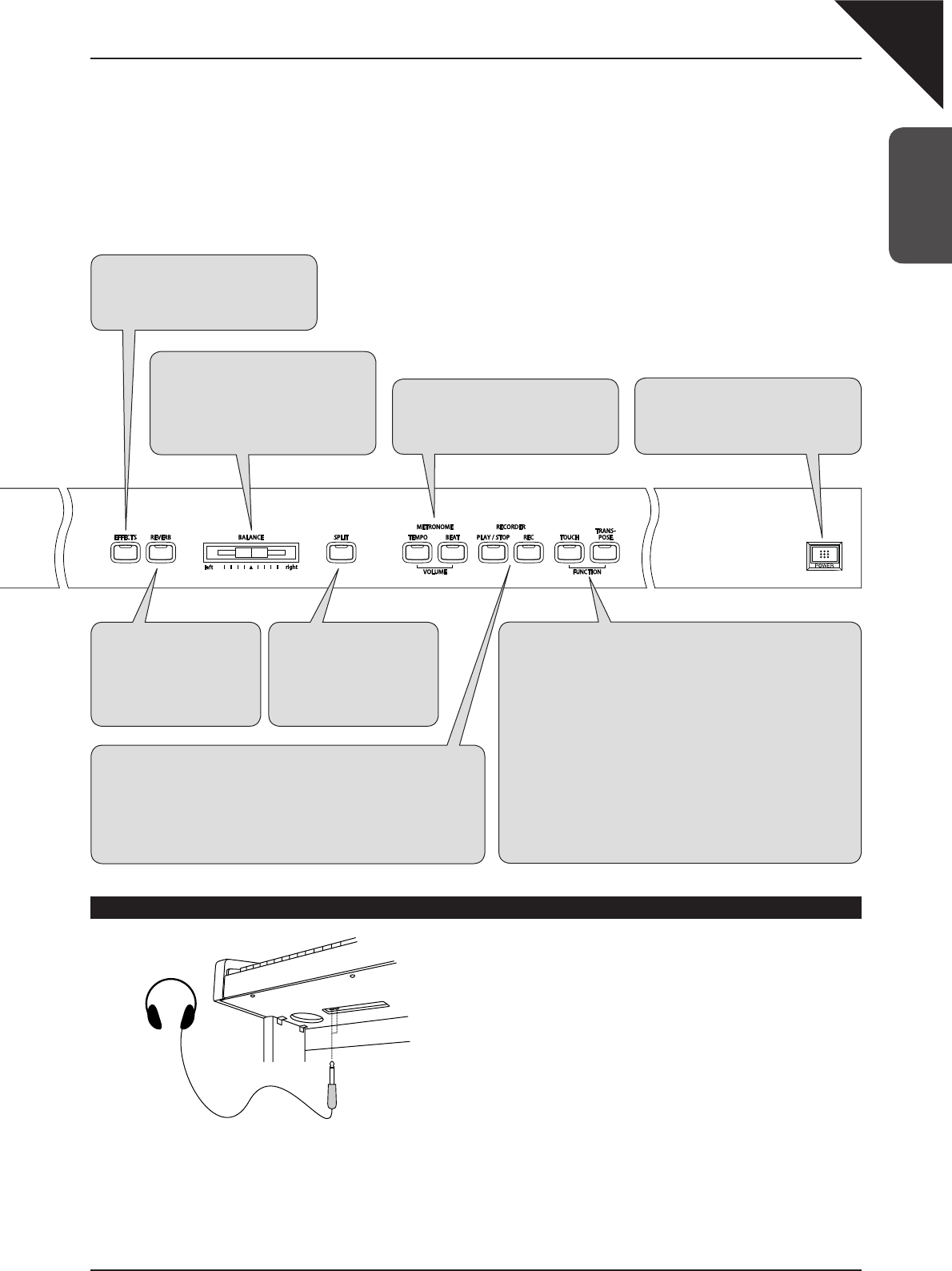
Page
9
1
PART NAMES AND FUNCTIONS
HEADPHONES
¡
Headphone jack (x 2)
There are two headphone jacks located on the left underside of
the piano.
Up to two pairs of headphones can be connected simultaneously.
• See Page 52 for information on attaching the headphone
hooks.
z
BALANCE
Use the balance slider to adjust the volume
balance between the two sounds in Dual or
Split mode. The balance slider also controls
the volume of Left & Right-hand lesson/
recorded parts.
z
EFFECTS
Use the EFFECTS button to add chorus,
delay, tremolo and rotary speaker effects to
the sound. (page 17).
z
METRONOME
Use these buttons to turn on/off the
metronome, and to set the tempo, beat,
and volume (page 26).
z
POWER SWITCH
Press this button to turn on/off the power.
Be sure to turn off the instrument after
playing.
z
RECORDER
The REC button is used for recording performances and when using the
lesson function, to record practices for comparison with the
built in songs and etudes.
The PLAY/STOP button is used to select a song and part to play, and to
start/stop playback of the recorded songs. It is also used to start/stop playback
when using the lesson function (page 31).
z
TOUCH
The TOUCH function allows different touch sensitivities for the keyboard
to be selected, other than the standard touch of an acoustic piano.
When this function is turned off, the touch sensitivity returns to the
standard touch of an acoustic piano (page 19).
z
TRANSPOSE
The transpose function allows the piano’s keys to be raised or lowered
in half steps. This is particularly useful when accompanying instruments
with different tones, or when a song learned in one key must be played
in another key. The transpose feature allows the song to be played in
the original key, but heard in another key (page 20).
z
FUNCTION
Pressing the TOUCH and TRANSPOSE buttons simultaneously enters
the FUNCTION modes, allowing various advanced parameters within the
CN piano, such as tuning and MIDI operation, to be adjusted (page 36).
z
SPLIT
The split function divides the
keyboard into two sections—
upper and lower—allowing
either part to be played with a
different sound. (page 14).
z
REVERB
Use the REVERB button
to add reverberation to the
sound, simulating the acoustic
environment of a recital room,
stage, or concert hall (page 17).


















